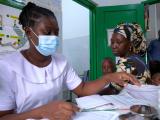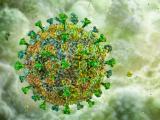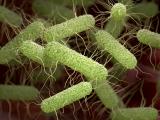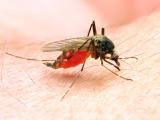Aug 27, 2012
Uganda reports another Ebola death
A patient hospitalized in Uganda's Ebola outbreak has died from the disease, pushing the number of deaths in the outbreak to 17, according to health ministry sources quoted in a report from UG Pulse, a media outlet in Uganda. The patient, a woman, had been treated at the isolation unit at the Kagadi government hospital. Rukia Nakamatte, a ministry spokesperson, told the Pulse that only one Ebola patient remains hospitalized at the facility and that three suspected cases are being monitored. The outbreak in Kibaale district started at the end of July and involves the Sudan strain of Ebola. A separate outbreak in the Democratic Republic of Congo involves the Ebola Bundibugyo strain and sickened 15 people and killed 10, according to an Aug 21 World Health Organization (WHO) report.
Aug 24 UG Pulse story
Aug 21 WHO report
Dengue cases more than double in Cambodia
Cambodia has had at least 27,590 cases of dengue fever through Aug 20, up from 11,017 cases in same period last year, according to Xinhua, China's state news agency. A report from the country's National Center for Parasitology, Entomology and Malaria Control said the disease has claimed 111 children's lives in that period, up from 48 deaths in that age-group during the same period in 2011. Dr. Char Meng Chuor, director of the center, sought to raise parents' awareness of the disease in their children, according to Xinhua. In all of last year Cambodia reported 15,980 dengue cases, including 73 fatalities in children.
Aug 25 Xinhua story
OIE database enhancements boost wildlife disease info
The World Organization for Animal Health (OIE) today announced the launch of a new version of its World Animal Health Information System (WAHIS), which features a new section for wildlife diseases. In a statement the OIE said member countries are required to report certain diseases to the OIE; however, the new system allows them to voluntarily report diseases that aren't officially listed. Dr Bernard Vallat, OIE director general, said in the statement, "The same importance and thoroughness given to the surveillance and control of diseases in domestic animals must apply to wildlife, when relevant, as global movements and exchanges of pathogens within and between the two populations as well as towards men, are increasing." Other enhancements to WAHIS include enabling affected species to be listed by taxonomic family and Latin names and allowing diseases to be grouped by wild species susceptibility. Dr Karim Ben Jebara, who heads the OIE's animal health information department, said in the statement that optimizing electronic tools such as WAHIS can help provide member nations with the earliest warning on disease events. The original version of WAHIS launched 6 years ago.
Aug 27 OIE statement
Salmonella-tainted mangoes sicken 22 in Canada
A Canadian produce importer has recalled Daniella brand mangoes from Mexico after the product was linked to several Salmonella Braenderup infections, according to an Aug 24 statement from the Canadian Food Inspection Agency (CFIA). The implicated mangoes were sold from Jul 12 to Aug 14 at retail stores in British Columbia, Alberta, Saskatchewan, Manitoba, Northwest Territories, Nunavut, and Yukon provinces. So far 22 illnesses related to the outbreak have been confirmed, 17 in British Columbia and 5 in Alberta, the Public Health Agency of Canada (PHAC) said in an Aug 25 statement.
Aug 24 CFIA statement
Aug 25 PHAC statement
DHS to test bioterror sensors in Boston's subway system
The US Department of Homeland Security's (DHS's) Science and Technology Directorate (S&T), as part of its "Detect to Protect" program, has scheduled a series of tests in Boston subways to measure the real-world performance of new sensors for detecting biological agents in the event of a bioterror attack, according to a DHS press release. Officials will release a small amount of an innocuous, common, food-grade killed bacterium into subway tunnels. The bacterium is considered nontoxic to humans, animals, and plants, the DHS said. The new sensors are designed to confirm the release of biological agents in minutes. S&T's Anne Hultgren, PhD, manager of the project, said, "The S&T testing will help determine whether the new sensors can quickly detect biological agents in order to trigger a public safety response as quickly as possible." DHS released inert gases in Boston's subway system in 2009 and earlier this month in initial studies to determine how released particulates would travel.
Aug 24 DHS news release


















